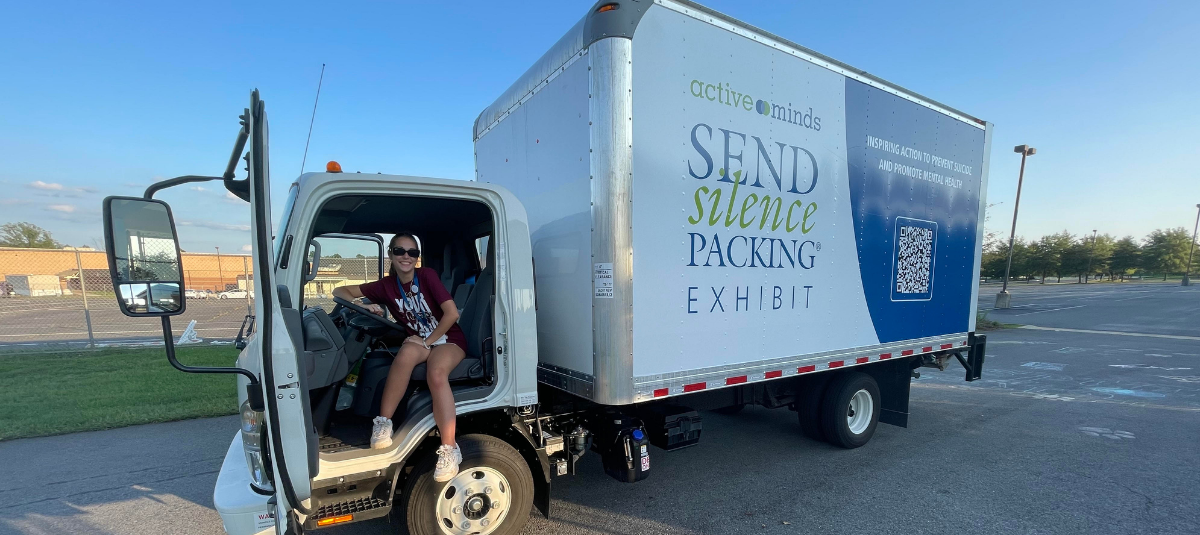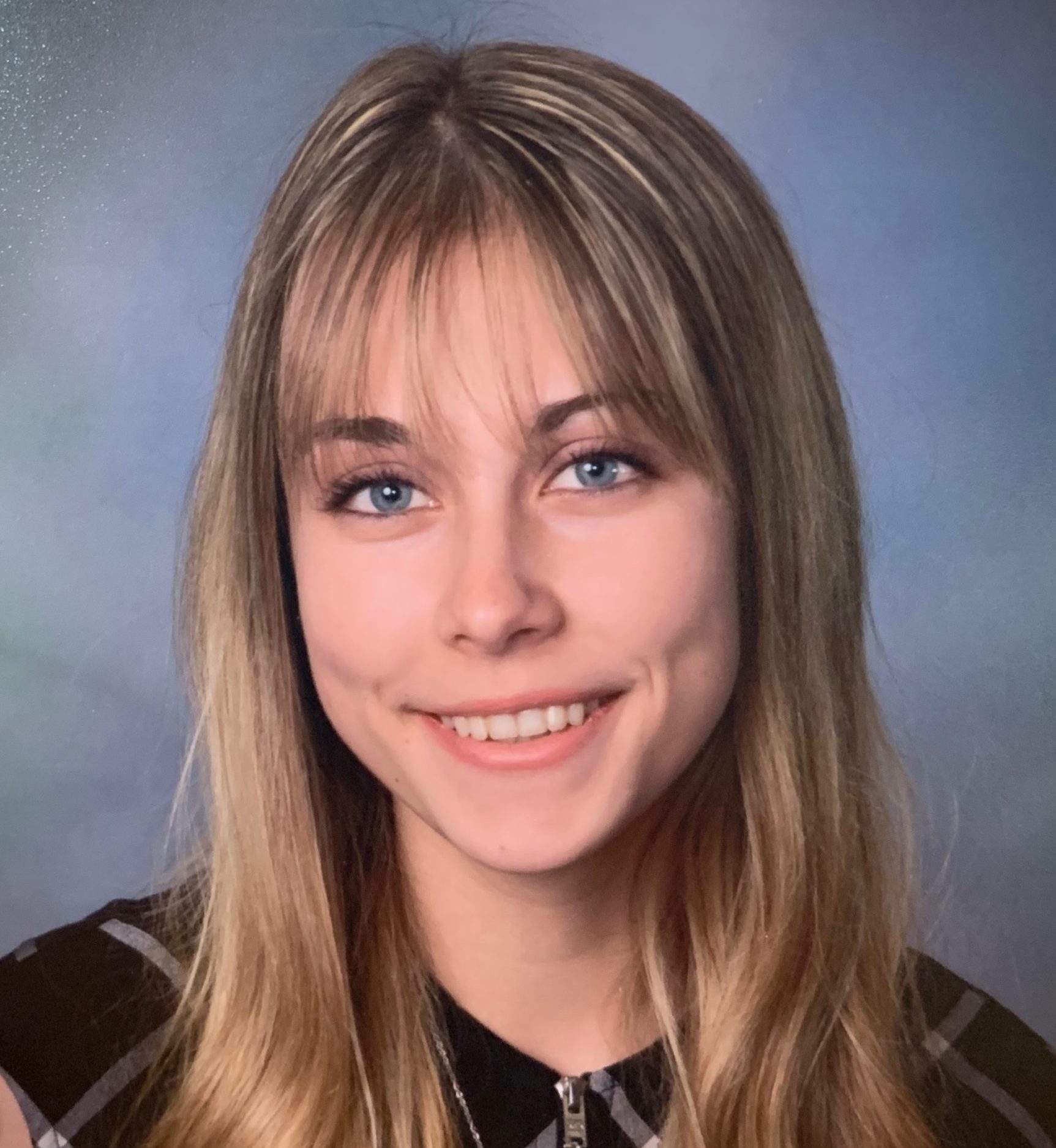Content Warning: This piece contains mentions of suicide.
For the past two months, I’ve been traveling across the country to host Send Silence Packing, Active Mind’s award-winning suicide prevention display. When I began, I knew this position would be just as impactful as when Send Silence Packing came to my college and touched me as a student. But, I’ve also learned new lessons through this work that I didn’t expect. Mostly, this role has reminded me that as a mental health advocate, I too, am always learning new ways to become a better ally.
Mental health isn’t openly discussed everywhere
I come from a family where mental illness is in our genes. From a young age, mental health days were prioritized. However, while my community didn’t necessarily ignore the topic, it was never fully embraced until I went away to college and found my Active Minds chapter. Yet, even then, stigma still lived on campus. I knew mental health was stigmatized, but being on the road and visiting different parts of the country has shown me that there are truly places where mental health is not something you speak of, ever. And if you do, you are met with resistance.
Despite this realization, what has really shone through during my time on tour are the people that speak up about mental illness, the students that push for Send Silence Packing to come to their school, the administrators that plan this event, and the people that come to the resource table to grab information for themselves and their peers. What rises above everything are the people that take the time to read the stories on the backpacks, to recognize each person lost to suicide, that come over to thank us for being here or ask, “What can I do to help?” It is these moments that remind me, “Even if you think it, you are not alone.” I am left in awe of the people that lead these movements, that open these discussions in places where they are not readily welcomed or even thought of as conversations to prioritize. Because often, it is difficult enough to open up to people you know will be there; so doing that around people that are not as educated on mental illness is brave and truly life-saving.
Suicide impacts everyone
While working as a coordinator, I had so many individuals (students, faculty, and staff) come up to me and share their personal experiences with suicide. Some mentioned a loved one lost to this tragedy; others reflected on their own survivor stories. Some just stopped by to say, “Thank you for being here,” and somewhere in those words, there is a story of their own – there is a reason this touched them. It doesn’t always have to be spoken, but it is felt in the air during these days. Suicide doesn’t discriminate. Any gender, race, sexual orientation, socioeconomic status can be affected, although some are more prone to mental health issues due to discrimination, lack of resources, or support. But, at the end of the day, we all have mental health.
At Lone Star College, Kim Hess, founder of Cassidy Joined for Hope, a national non-profit organization aimed at preventing teen suicide in honor of her daughter, spoke at a panel following the Send Silence Packing display and said, “No family is immune to suicide.” She said she used to think something like this could never happen to her family. Maybe this is where our mindset needs to change. It can happen to our family, our friends, to ourselves if we do not prioritize mental health care and get the help we need when we need it. Or rather, before we need it. Because mental health resources are not just for those who are mentally ill. We all deserve to take care of our minds and we should never be ashamed to.
People want to talk about it
It never stops being astonishing how many people are affected by suicide, even as someone who has worked in the mental health field and is familiar with the statistics. That’s part of why the display of backpacks is so impactful itself — we see for ourselves the real people that have lost their lives due to suicide. People that are someone’s child, best friend, student, co-worker, cousin… Behind each story is a million more. And each deserves to be heard. Every person I speak with at these events is open and vulnerable about their own loss or experiences. But even the people that stop to read the stories, listen to the Behind the Backpacks display, take a moment to write a note of encouragement in our traveling journal, or even grab a resource are continuing that conversation beyond this display. All of these acts tell me that people want to talk about mental health, they just need a space to. And when we provide that space, the real change starts. Because suicide prevention should be talked about every single day.
We just need to be there
If someone you know is struggling, you want to get them that professional help. One way you can offer this help is to save these two numbers in your phone: The National Suicide Prevention Hotline (1-800-273-TALK) and The Crisis Text Line (741-741). And, remember to call 9-1-1 in an emergency. However, in an everyday conversation with a friend that seems to be struggling, you don’t have to be an expert and you don’t need to know all the right things to say. Often, we do not push someone as to how they are doing even if we are worried for fear of angering them, or not giving the right advice. But it is important to have those conversations even if they are scary to have. The easiest thing to remember when having these conversations is our resource V-A-R®, or Validate-Appreciate, Refer. When a loved one opens up to you, validate their feelings, appreciate their courage to share, and lastly, refer to resources and/or professional help. This process can sound like “That must be really difficult for you,” “I appreciate you trusting me with this,” and “Do you want to walk to the counseling center together?” Often, your friend just wants someone to be there to listen to them, make them feel less alone, tell them it is ok to not be ok, and that there is help available.




